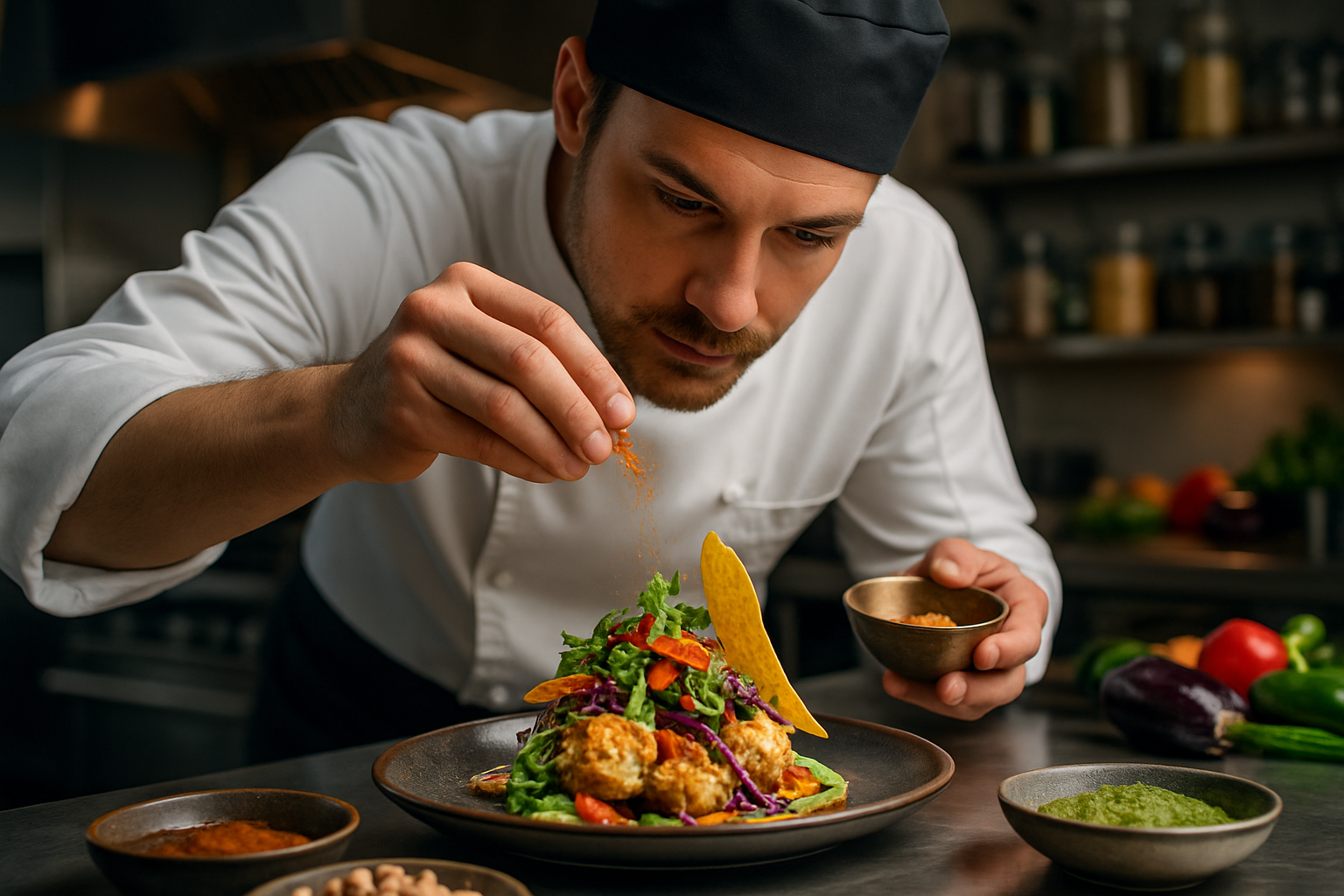Culinary Alchemy: Transforming Ordinary Ingredients into Extraordinary Dishes
Discover the art of culinary alchemy, where everyday ingredients undergo magical transformations to create extraordinary dishes. This innovative approach to cooking challenges conventional wisdom and pushes the boundaries of flavor, texture, and presentation. Join us on a journey through the world of culinary wizardry, where humble ingredients are elevated to new heights of gastronomic delight.

Unexpected Pairings: The Key to Culinary Innovation
One of the hallmarks of culinary alchemy is the ability to combine seemingly disparate ingredients in harmonious ways. By challenging preconceived notions about flavor pairings, innovative chefs create dishes that are both familiar and entirely new. For example, the combination of chocolate and olive oil might seem unusual at first, but the rich, fruity notes of high-quality olive oil can actually enhance the complexity of dark chocolate. Similarly, pairing strawberries with black pepper or basil can bring out unexpected nuances in the fruit’s flavor profile. The key to successful unexpected pairings lies in understanding the underlying flavor compounds in ingredients and how they interact with one another. This knowledge allows cooks to create dishes that are greater than the sum of their parts, offering diners a truly unique culinary experience.
Texture Transformation: Reimagining Familiar Ingredients
Culinary alchemy isn’t just about flavor – it’s also about transforming the texture of ingredients to create entirely new eating experiences. Consider the humble carrot: typically crunchy and sweet, it can be transformed into a silky-smooth puree, dehydrated into chips, or even turned into a fluffy “soil” through molecular gastronomy techniques. By altering the physical structure of ingredients, chefs can play with diners’ expectations and create dishes that surprise and delight. Another example is the use of agar agar to create “noodles” from fruit juices or vegetable purees, offering a playful twist on traditional pasta dishes. These texture transformations not only add visual interest to plates but also challenge diners to reconsider their relationship with familiar ingredients.
The Role of Technology in Culinary Alchemy
As culinary innovation continues to push boundaries, technology plays an increasingly important role in the kitchen. From sous vide machines that allow for precise temperature control to centrifuges that separate ingredients based on density, modern kitchen equipment is enabling chefs to achieve transformations that were once thought impossible. For instance, the use of liquid nitrogen for flash-freezing can create incredibly smooth ice creams and sorbets, while also allowing for dramatic tableside presentations. 3D food printers are another emerging technology that promises to revolutionize the way we think about food preparation and presentation. By combining traditional cooking techniques with cutting-edge technology, culinary alchemists are able to create dishes that are not only delicious but also visually stunning and conceptually innovative.
From Lab to Table: Bringing Culinary Alchemy Home
While many culinary alchemy techniques may seem out of reach for home cooks, there are plenty of ways to incorporate these principles into everyday cooking. Simple techniques like infusing oils with unexpected flavors, using a blowtorch for precise caramelization, or experimenting with different forms of fermentation can all add an element of transformation to home-cooked meals. The key is to approach cooking with a sense of curiosity and a willingness to experiment. By questioning traditional methods and being open to new possibilities, home cooks can discover their own brand of culinary alchemy, turning simple ingredients into memorable dining experiences.
Culinary Alchemy Tips & Facts
• Gelation agents like agar agar can transform liquids into gels with various textures
• Maltodextrin can turn fats into powders, creating unique mouthfeel experiences
• Sous vide cooking allows for precise temperature control, resulting in perfectly cooked proteins
• Dry ice can be used to create instant sorbets and dramatic fog effects
• Transglutaminase, or “meat glue,” can bind proteins together, enabling creative meat presentations
• Spherification can create caviar-like spheres from almost any liquid
• Vacuum sealing can infuse flavors into ingredients much faster than traditional methods
• Liquid nitrogen can freeze ingredients instantly, preserving their structure and flavor
In conclusion, culinary alchemy represents the cutting edge of gastronomic innovation, pushing the boundaries of what’s possible in the kitchen. By combining scientific knowledge, creative thinking, and a willingness to experiment, chefs and home cooks alike can transform ordinary ingredients into extraordinary culinary experiences. As we continue to explore new techniques and technologies, the world of culinary alchemy promises to offer endless possibilities for delicious discovery.





